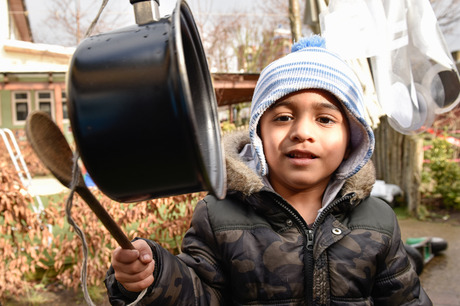children's centre in London is improving practice, as well as making
work more satisfying for the team. Headteacher Dr Julian Grenier offers
an insight into the setting's journey

The biggest motivator for practitioners working in the early years must surely be the desire to make a difference to the lives of children and their families. There are few things more satisfying than seeing young children make big steps forward in their development: to see a child bouncing in to nursery happily when only a week ago they seemed reluctant and overwhelmed at the nursery gate, or to hear parents say that the work of the nursery has really helped their child with something tricky like beginning to play alongside others or starting to say a few words.
If we think some more about this motivation, we can see that it is really a dynamic situation that results from how different elements interact: an individual practitioner may come into work with energy and enthusiasm, but all of that will be lost if the workplace does not enable that individual to feel confident, supported and able to make good use of their ideas and skills.
On the other hand, an organisation like a nursery or a school may have high ideals about how to offer high-quality provision and provide a real benefit to the children who attend, but if it cannot engage with its staff team and build enthusiasm and energy, then those ideals end up like seeds scattered onto rocky ground.
Here, I will be considering an approach to developing staff motivation and practice through cycles of group discussion and critical reflection. This is an open-ended approach, characterised by a staff team learning together and grounding its thinking with evidence from its own practice.
Instead of being mentored, the group engages in a type of peer mentoring with considerable self-direction underpinned by clear structures and processes. One of those essential structures is the conviction that every child has the potential to be a strong, active and capable learner.
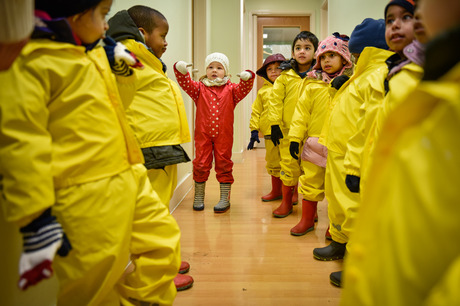
EARLY LEARNING AND ADULT RESPONSIVENESS
It is now widely agreed that there is no simple 'programme' or approach to effective work with babies, toddlers and young children in early years settings. More than half a century ago, Piaget proposed that children actively construct their learning through interactions with people and materials in the world. Although many specific elements of his theories have been challenged, disproved or developed, this central proposition remains widely accepted.
In her 2011 TED talk, the eminent psychologist Alison Gopnik argued that 'babies and young children are like the research and development division of the human species', analysing the information around them to make decisions and to generalise meanings.
If you stop to consider for a moment why a toddler might say 'I goed' to you instead of 'I went', you might conclude that learning to speak is not about hearing a word and then repeating it. When did that toddler hear the word 'goed'? Instead, they have heard and analysed lots of words, without being aware of their thinking, and they have concluded that you make a verb refer to the past by adding -ed to it.
Then they have applied their theory to the verb go, and created the new word 'goed' - except now they are going to learn that their theory needs changing, because 'go' is an exception to the rule.
In this remarkable sense, toddlers are like researchers into human language, gathering as much information as they can, experimenting with their theories and learning from the feedback they receive.
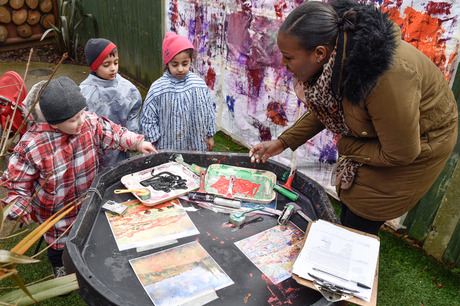
In early childhood, children are not just learning language so they can communicate - they are also using language as a medium for their learning, as well as physical activity and exploration. You can see this reflected in approaches like sustained shared thinking (SST), identified by the Effective Provision of Pre-School Education (EPPE) project as a powerful way of helping children to learn.
In SST, the adult does not simply pose questions, like 'Which one is red?', or simply teach information to the child by telling. Instead, the child contributes to the developing ideas: 'individuals "work together" in an intellectual way to solve a problem, clarify a concept, evaluate activities, or extend a narrative.' (Siraj-Blatchford, 2009).
So we begin with some important assumptions about the babies and young children we are working with: they are creative and capable learners, given the right opportunities and environment; and they need adults to respond minute-by-minute to what they are doing and saying, not just to offer pre-decided information and questions. Everything depends on the practitioner's capacity to use knowledge of child development and skills in developing relationships and play, as well as the essential curriculum knowledge set out in the Early Years Foundation Stage (EYFS).
If young children's learning is sophisticated, then we need to value the sophistication of the adults who work with the children, day in and day out. As practitioners in the early years, we have often been rather over-associated with the young children we work with, as if the job is somehow not really grown-up and serious, just an excuse to relive childhood pleasures. In her TED talk, Gopnik argues that we should not neglect the importance of becoming an adult, but nor should we see young children as anything other than extraordinary in their capabilities.
'It's good to be a grown-up,' she says. 'We can do things like tie our shoelaces and cross the street by ourselves. And it makes sense that we put a lot of effort into making babies think like adults do. But if what we want is ... to have open-mindedness, open learning, imagination, creativity, innovation, maybe at least some of the time we should be getting the adults to start thinking more like children.'
And this is exactly where a mentoring approach for early years practitioners, focused on professional discussion and critical thinking, comes into the picture.
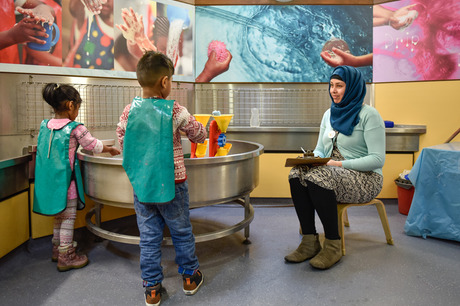
'KEEN OBSERVATIONS'
A well-established way to learn about the child we work with is through observing them, and recording those observations. However, as Jayne Osgood (2012) found during her research into early years practice, 'doing observations' can become just another chore.
When I was doing my own research into how early years practitioners think about their work, it struck me that there is often a lot of information around about children, but little time is made available for discussion, debate and professional dialogue.
Anne, one of the participants in my research, put this view across particularly well when she said: 'We all write the observations, we all do them very well, then that's it. It's done, it's gone in the folder, you don't ever look at it again ... But it would be nice to come together as a group and pick a child and say what the observations are about, to have a discussion and get a better understanding of the child.'
If it is only a short step from finding the task of doing observations a dull chore to a general loss of interest in what children are doing and learning, then perhaps the reverse might be true. By generating more interest and discussion about what we have noticed, maybe we can also generate that spirit of open-mindedness that Gopnik values so greatly. Arguably, if we want children to develop those essential qualities of imagination, creativity and innovation, we need to have them for ourselves, too.
In my research, I became increasingly interested in how practitioners think about the children they work with. By talking about what the research participants had observed, we were able to think together much more deeply about the children, their learning, and what support and teaching could usefully be offered. Discussing observations like this also had a second, positive effect - it made us more curious about the children, and that drove us to be still more observant. New Zealand researcher Carmen Dalli has coined a useful phrase for this: 'keen observation'.
I would argue that to develop 'keen observation', staff need time to think about what they have noticed, and some time to talk about it with at least one other, interested person. In busy settings, it is easy to prioritise administrative and other tasks and leave little or no time to talk in detail about the children as individuals and about their learning. It can be difficult to find and then protect even a short amount of time, like 30 minutes a week, for this sort of discussion; difficult, but important.
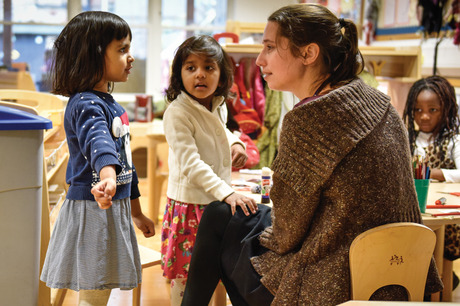
TIME FOR REFLECTION: THE RIGHT CONDITIONS
A consistent approach
In order to have worthwhile discussions, I judged that it was important to begin by training the participants to use a consistent approach to record their observations. A number of different options were available from previous, large-scale research projects, perhaps most notably the involvement and well-being scales from the Effective Early Learning (EEL) project and the Target Child Observation from the Oxford Pre-School Project and the EPPE project. I chose to use the latter with some minor modifications.
The important point is that consistent sets of observations could generate material to think about systematically together; random notes and Post-its would just lead to rambling chats. The New Zealand researchers Linda Mitchell and Pam Cubey (2003) have argued that to bring about change, practitioners need to record the types of data that can challenge their current understandings and even create surprises. Otherwise, the ordinary human tendency to collect information in support of our existing opinions will completely overwhelm the potential for learning and for change.
Talking ... and thinking
I would argue, too, that this type of talking is also a sort of thinking: as we put our ideas into words as members of a group, we look back on what we have experienced in different ways, and make new connections. We start to see things differently. This is, in essence, what the psychologist Jerome Bruner claimed in relation to the Oxford Pre-School Project: 'Change comes by the perspective one gains in observing one's own behaviour after the fact and freed of its pressures. The shift from participant to spectator may not inevitably assure fresh perspective, but it surely helps.'
Furthermore, as others add to what we say, challenge or agree with us, we modify our ideas and therefore develop our thinking. Our private theories become public, and we produce new theories together. One of my roles in the discussions was to keep referring back to data: to urge participants to justify their beliefs by finding evidence in their written observations, or to point out when what they thought seemed to be at odds with what they had observed.
For example, one of the participants, Julie, began by worrying about the amount of time that some of her key children appeared to spend just watching others. But as she carried on with her observations over time and reflected on them, she shifted her position in the light of new evidence. 'They were watching and then they were doing the same activity a couple of days later,' she said. 'You see them thinking about stuff even though they look like they're doing nothing; their minds are working.' At the end of the three-month project, she concluded that it was 'helping me to notice more things in children's actions'.
In my first year as headteacher at Sheringham Nursery School and Children's Centre, I spent blocks of time working with small groups of staff for 45 minutes, facilitating similar types of discussions. When the group worked best, it was because I mostly listened. I joined in to show interest and to learn from the insights of the team. I could also be useful if I encouraged staff to clarify their thoughts, by asking questions or probing for more information. On the other hand, the worst discussions were ones where I spent too much time offering my own thoughts or imposing my own agenda.
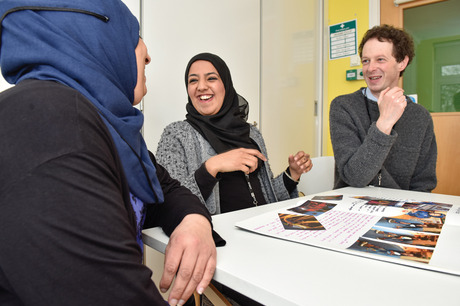
Spreading the word: working with parents
In this new role, I also wanted to develop my research findings further, so I focused on the question of how we could share our thinking about the children more widely - especially with their parents. Sheringham's deputy headteacher, Lesley Webb, developed a small pilot to experiment with making children's learning more visible by creating 'learning stories'.
Drawing on the work of Margaret Carr, our learning stories involved the practitioner in selecting a significant episode of the child's learning and capturing its development and evolution through written observations and photographs. It was an approach that quickly took off, enabling staff to discuss ideas not only within the team but with parents and others.
In fact, one of the most memorable events in this pilot phase of developing the learning stories occurred when we assumed that a mother must have lost the learning story about her son. Several weeks had passed since it was shared with her, and it had not come back into nursery. The learning story detailed her son's fascination with small-world dinosaur play, which had been supported by his key person sharing reference books with him. He developed increasingly precise play based on the characteristics of each type of dinosaur - reaching up for leaves, attaching and killing others, living in groups or hunting solo.
When I asked if the learning story had been lost or damaged, the child's mother told me that she needed to keep it for longer. It had been round everyone in the office, she said, and most of his aunts and uncles, but there were still a few more people who needed to see it. She described her feelings of pride and amazement as first she and then her friends and family appreciated what a powerful learner her son was, starting from his play and special interests. It was a memorable, emotional moment for me.
I realised that this way of working not only had the potential to change our thinking about children within our team - it could also enable parents to surprise and challenge us to think beyond the usual limits of our practice. By committing time to 'keen observation', discussion and reflection, we had developed a home-grown approach to peer mentoring in small groups, which was beginning to make our work both more sophisticated and more satisfying.
Dr Julian Grenier is headteacher of Sheringham Nursery School and Children's Centre, London, and national chair of Early Education, www.early-education.org.uk
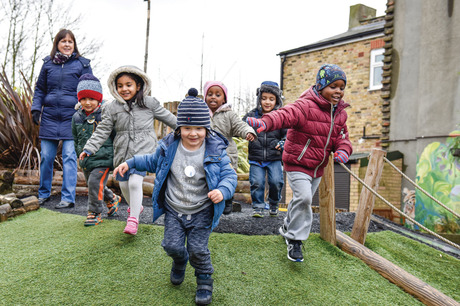
MORE INFORMATION
- Assessment in Early Childhood Settings: learning stories by M Carr
- Characteristics of Effective Professional Development Linked to Enhanced Pedagogy and Children's Learning in Early Childhood Settings by L Mitchell and P Cubey, www.educationcounts.govt.nz/publications/series/2515/5955
- Conceptualising Progression in the Pedagogy of Play and Sustained Shared Thinking in Early Childhood Education by I Siraj-Blatchford
- EPPE project: www.ioe.ac.uk/research/153.html
- Quality Early Childhood Education for Under-Two-Year-Olds: what should it look like? by C Dalli, E White, J Rockel and I Duhn, http://eceonline.core-ed.org/file/download/95762
- Under Five in Britain by J Bruner
- What do babies think?, www.ted.com/talks/alison_gopnik_what_do_babies_think.
